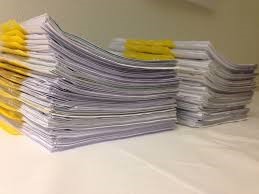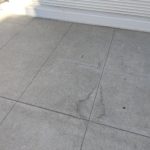So you’re dealing with water damage – the last thing you need to add to your growing laundry list of weekly tasks. The first questions that come to mind are “can this be covered under my homeowner’s insurance policy?” and “if it isn’t how much is this going to cost me?” Then the influx of questions start rushing in about how soon can this be fixed and which water damage restoration company to choose.
But first things first. There are different situations in which water damage is covered under homeowners insurance policies. So the answer to your question would really be that it depends. Factors including the source, location, and type of water damage will play a big role in the type of coverage, if at all.
Homeowner’s Insurance and Water Damage
Back then, homeowner’s submitted claims for all kinds of incidents, including fire damage, water damage, and even burglaries. But nowadays, water damage is the most common claim submitted, just ahead of hail and wind damage. The reason this is the case is because there are a number of different sources capable of causing significant destruction around the home or building, including leaking, frozen, and burst pipes, water heater leaks, sump pump failures, rainstorms, and malfunctions of a variety of water-related appliances.
Now with so many claims, numerous questions are coming: is the damage covered? What is gradual damage? Is mold damage covered? How do I file a water damage claim? The list goes on. But in the most general policy, here is a list of what is covered by the basic plan:
Water damage covered by homeowner’s insurance:
- Accidental overflow of a leaking toilet
- Plumbing problems: Leaking, frozen pipes, and burst pipes, faulty plumbing, or sudden overflow
- Leaking roof
- Mold growth after water damage cleanup
- Property damage from vandalism
Water damage NOT covered by homeowner’s insurance:
-

Sewage backups are usually not covered. But additional insurance can be purchased. Sewer backup
- Accidental or sudden discharge
- Storm and rain damage
- Leaking pipes caused by poorly-maintained pipes
While these instances are not covered by insurance, due to how expensive they are to fix, additional insurance can be purchased. Especially for those living in a flood zone, it’s highly recommended to pay for additional flood insurance, especially because the costs of these homes are particularly less expensive.
Other Common Questions about Water Damage
Below is list of the most often asked questions concerning water damage in their home, apartment, or condo:
- What is gradual damage?
- What are examples of gradual damage?
- What do I do if my claim is denied?
Although gradual damage is not usually covered because the company may claim that the problem could have been treated earlier or prevented, therefore, denying your claim. On the other hand, there are exceptions, such as those listed below.
But don’t worry if your claim is denied. There are always other options, including more cost efficient ways to pay for water damage repair.
What is Gradual Damage?
Gradual damage is when damage slowly progresses over time, often going hidden or unnoticed until it becomes out of control. For example, bits of paint chipping off the wall due to something rubbing against it for a longer period of time would be considered gradual damage. But you may not notice the problem until it has grown over time.
Water Damage and Gradual Damage
Every home is different, filled with building materials and contents that are positioned in different places. Due to their location, some will be at a higher risk for damage than others. But as homeowners, we only see the surface of building materials and contents, so we don’t know what’s happening behind them.
Without frequent cleaning and maintenance, various problems can occur, such as blockages, leaks, and other hidden damage. What makes it even worse is that we won’t notice it until the damage makes it’s way to the surface, urging us to file a claim. This is often a problem many policy holders face because the damage wasn’t noticed right away, classifying it as gradual damage.
Examples of Gradual Damage

Gradual damage can include a number of different situations, including:
- Plumbing, pipes, or faucets leaking onto the walls, ceilings, and floorboards
- Rotting, corrosion, or mold
- Deterioration of electrical wiring
- Poor or lack of repairs
- Seepage from the foundation or other undetected exterior water damage
- Deterioration on the roof, including shingles, tiles, and flashings
Even if you don’t think your problem includes one of these situations mentioned above, it can be difficult to figure out why a claim was denied. Even when you filed it right away, the problem might have started a while ago. But insurance will only cover accidental and sudden damage, meaning when the damage just started and not the time it was noticed.
When Insurance Covers Gradual Damage
There are exceptions to every rule, but this can become tricky. Check out the following in which gradual damage may be covered by your insurance, despite the lateness in making the claim:
Mold Growth from Water Damage
Depending on the state you live in, some insurance companies will allow you to purchase mold removal coverage. To find out if your policy covers the service, just call your representative, and if not, what would be the cost to add it on.
Tree Falling on Roof
In the even of major storms, wind speeds become strong enough to knock trees over onto roofs. They can then create an opening for water to pour in. Of course this would be covered, but additional damage can still occur down the road.
After the initial damage was repaired, an odor starts to develop and paint is chipping in the same spot the repairs were made. An additional insurance claim can be made as long as you use the same company that covered the first repairs. This will cover additional repairs, mold, and odor removal that were made as a result of improper repairs the first time.
Broken Pipe

When a broken pipe occurs, the damage usually isn’t noticed right away, making it gradual damage. While the costs to fix the pipe (or appliance if it caused the damage) will not be covered, the repairs for initial damage will be. As long as the copy states that broken and leaking pipes are covered, you can at least expect compensation from a portion of the damages.
When Being Denied on an Insurance Claim
If you are ever denied on an insurance claim, don’t hesitate to ask for a full explanation why. While your policy can’t guarantee to cover every incident, you have a right to know why the damage is not covered in the policy.
To understand how it works, there are 3 different representatives: the agent, adjuster, and contractor, and it is important they all stay consistent. If you have any questions or don’t fully understand what they are explaining, don’t be afraid to ask them for clarifications.
If you still don’t agree with why they are denying the claim, you can also ask your agent for a second opinion or for him/her to review the claim themselves. It’s understandable that you are in a stressful situation, but you want to make sure you understand everything fully.
If there is an endorsement, find out if the coverage would be covered under that situation. It is possible that you could find yourself with the same problem in the future; therefore, you will want to consider purchasing additional insurance if it is likely to happen again. Or, if you find that it is only covered within a different company, feel free to switch over.
Prevent Denial on Your Water Damage Claim

The best way to have some peace of mind, even during a water emergency, is to have full coverage. Even before buying the home, ensure that you are aware of all risks and potential problems so that you can be ready when it happens – again. Here’s a list of other ways you can avoid having your claim denied:
- Keep records of all repairs and services you have hired to perform maintenance in the past.
- Understand all coverages within the policy, their exclusions, and your responsibilities as a homeowner
- Conduct a regular maintenance inspection at least once each year to identify and fix any problems before they grow into a disaster.
- Find and purchase the best policy that meets your needs and do additional research of additional coverage in “what-if” situations.
Finding a Water Damage Repair Company
One of the most important steps after finding severe water damage is to contact your insurance company and file a claim. But regardless if the damage is covered or not, the repairs still need to be made. Calling a professional water damage restoration company right away can also save both time and money during the repair process.
ServiceMaster is one of the most trusted and professional water mitigation companies in the nation. They keep their services cost-efficient while arriving within 2 hours of the first call to prevent the damage from spreading. Each of their technicians is also IICRC-certified in addition to having years of experience. In sum, while the water damage may not always be covered under your insurance policy, you can always count on an effective and efficient water damage restoration service from ServiceMaster.


